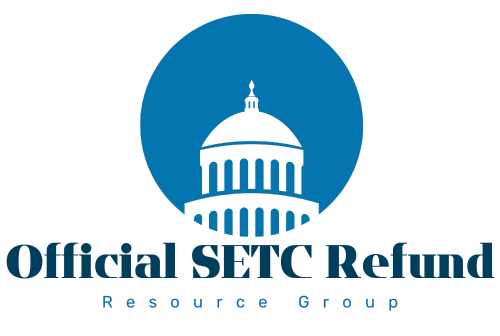Table of Contents
Examples of Self-Employed Professions
Note: For a comprehensive overview of the Self-Employed Tax Credit program that integrates the information provided in this post with the broader context of the entire initiative, please click here.
The SETC Tax Credit is available to individuals who identify as self-employed, including but not limited to Sole proprietors, Freelancers, Independent contractors, Gig workers, Single-member LLCs taxed as sole proprietorships, General partners in partnerships. This encompasses a diverse array of professions, such as but not limited to:
| Profession | Eligible for SETC |
|---|---|
| Accountants and bookkeepers | ✓ |
| Airbnb hosts | ✓ |
| Amazon resellers | ✓ |
| Consultants | ✓ |
| Construction workers | ✓ |
| Copywriters | ✓ |
| Dentists | ✓ |
| Graphic designers | ✓ |
| Personal trainers | ✓ |
| Photographers | ✓ |
| Real estate agents | ✓ |
| Rideshare and delivery drivers | ✓ |
| Social media marketers | ✓ |
| Veterinarians | ✓ |
| Website designers and developers | ✓ |
Contrary to popular belief, having W-2 income does not disqualify you from the SETC Tax Credit. Even if you have a full-time job but also earn self-employment income on the side, you can still claim the credit for your self-employed work.
You filed a Schedule SE (1040) and paid self-employment taxes
To qualify for the Self-Employed Tax Credit, you must have filed a Schedule SE (Form 1040) for the 2020 and/or 2021 tax year, reported a positive net income, and paid self-employment taxes on those earnings.
You were unable to work due to COVID-19
- Being subject to a federal, state, or local quarantine or isolation order
- Being advised by a health care provider to self-quarantine
- Experiencing COVID-19 symptoms and seeking a medical diagnosis
- Caring for someone subject to quarantine or isolation
- Caring for a child whose school or place of care closed due to COVID-19
If you missed work for any of these COVID-related reasons, you could be eligible for the SETC Tax Credit for the qualifying days. The qualifying days must fall within the following periods:
- April 1, 2020 to March 31, 2021 (referred to as “Period 1”)
- April 1, 2021 to September 30, 2021 (referred to as “Period 2”)
| Criteria | IRS Quote | IRS Reference |
|---|---|---|
| Subject to COVID-19 quarantine order | “Is subject to a Federal, State, or local quarantine or isolation order related to COVID-19” | IRS Fact Sheet Question 61 – How is the “qualified sick leave equivalent amount” for an eligible self-employed individual calculated? |
| Advised to self-quarantine | “Being advised by a health care provider to self-quarantine due to concerns related to COVID-19” | COVID-19-Related Tax Credits: Basic FAQs, under “What is included as qualified sick leave wages?” |
| Experiencing COVID-19 symptoms | “Experiencing symptoms of COVID-19 and seeking a medical diagnosis” | COVID-19-Related Tax Credits: Basic FAQs, under “What is included as qualified sick leave wages?” |
| Caring for quarantined individual | “Caring for an individual who is subject to a Federal, State, or local quarantine or isolation order related to COVID-19 or been advised by a health care provider to self-quarantine due to concerns related to COVID-19” | COVID-19-Related Tax Credits: Basic FAQs, under “What is included as qualified family leave wages?” |
| Child care unavailable due to COVID-19 | “Caring for the employee’s child if the school or place of care of the child has been closed, or the child care provider of such child is unavailable, due to COVID-19 precautions” | COVID-19-Related Tax Credits: Basic FAQs, under “What is included as qualified family leave wages?” |
| COVID-19 vaccination or recovery | “Obtaining immunization related to COVID-19 or recovering from any injury, disability, illness, or condition related to the immunization…” | IRS FAQ Section 108 – How is the “qualified sick leave equivalent amount” for an eligible self-employed individual calculated? (updated July 29, 2021) |
Eligibility Scenarios
Scenario 1: Full-time freelance graphic designer
Sophia is a full-time freelance graphic designer. In 2020, she earned $60,000 in self-employment income and filed a Schedule SE with her tax return, paying self-employment taxes on those earnings. In 2021, Sophia contracted COVID-19 and was unable to work for 20 days while she recovered. Her net self-employment income for 2021 was $50,000. Sophia qualifies for the Self-Employed Tax Credit because:
- She is self-employed
- She filed a Schedule SE in both 2020 and 2021 with positive net income
- She was unable to work due to COVID-19 illness in 2021
Scenario 2: Part-time rideshare driver
Marcus works a full-time job as a teacher but also earns money on the side as a part-time rideshare driver. In 2020, he earned $5,000 from his rideshare gig and filed a Schedule SE to report this self-employment income. In 2021, Marcus had to quarantine for 14 days due to exposure to COVID-19 at his teaching job. During this time, he could not drive for the rideshare company. His net self-employment income for 2021 was $4,500. Marcus qualifies for the SETC Tax Credit because:
- He is self-employed (even with W-2 income)
- He filed a Schedule SE in both years with positive net income
- He was unable to perform his self-employed work due to COVID-related quarantine
Scenario 3: Gig worker with multiple income streams
Lila is a gig worker who earns income from a variety of sources. She sells handmade jewelry on Etsy, walks dogs through Rover, and does freelance writing. In 2020, her net self-employment income across all these gigs was $15,000, which she reported on a single Schedule SE. In 2021, Lila had to care for her child whose daycare closed due to COVID-19. She was unable to work her various gigs for 30 days. Her net self-employment income for 2021 was $12,000. Lila qualifies for the SETC Tax Credit because:
- She is self-employed
- She filed a Schedule SE in both years with positive net income (even from multiple sources)
- She missed work to care for her child due to COVID-related daycare closures
Conclusion - The Bottom Line
The Self-Employed Tax Credit is a valuable opportunity for a wide range of self-employed individuals who faced COVID-related challenges in 2020 and 2021. If you earned self-employment income, filed a Schedule SE, and missed work due to COVID-19, you likely qualify for this substantial tax relief.
Note: For a comprehensive overview of the Self-Employed Tax Credit program that integrates the information provided in this post with the broader context of the entire initiative, please click here.
Disclaimer:
The information contained in this post (“Document”) is for general informational purposes only and is not intended to be financial or legal advice. While the information presented is believed to be accurate at the time of publication, laws and regulations are subject to change. You should not take any action based on the information in this Document without seeking professional advice from a qualified financial advisor or attorney. Gig Workers Solutions makes no warranties or representations of any kind, express or implied, about the completeness, accuracy, or reliability of the content of this Document. Gig Workers shall not be liable for any damages arising out of or in connection with the use of this Document/post or any others on this its website.

A dedicated financial consultant with extensive expertise in tax strategies for self-employed individuals including freelancers, gig workers, and independent contractors. With a focus on maximizing tax benefits, Richard expertly guides clients through the nuances of the Self-Employed Tax Credit, ensuring they leverage every available opportunity to reduce their tax liabilities.




